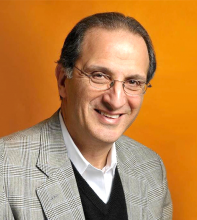You are here
Trump’s executive orders biased
Jan 30,2017 - Last updated at Jan 30,2017
By now, Donald Trump’s penchant for exaggeration and self-promotion has become well established.
Whether born of a form of pathological narcissism or just plain hucksterism, his need to claim that everything he does is the biggest and best is unsettling and, at times, embarrassing.
Most troubling is the concern that Trump may actually believe his non-factual boasts, that because his ego is so needy he cannot accept reality.
This is clearly not a comforting quality for a commander-in-chief.
During his first week in office, this weakness has been on full public display.
Whether in his weirdly vainglorious address before the CIA, his first interview with a major TV network, or on Twitter — the new president has spent way too much time trying to convince the public (and maybe himself?) that his crowds were “the largest in history”, that the applause he received at the CIA set a record, and that massive unprecedented voter fraud was the reason he did not receive more votes than his opponent.
That all these claims are provably untrue does not appear to register with the White House.
When challenged by media fact-checkers, the president and his staff become belligerent, striking back at the “offending” reporters with threats to have their access denied and future questions unanswered.
More recently, a top White House aide referred to the questioning media as “the enemy”.
It appears that in the mind of the president and company, the exaggerations and fabrications must be believed — or else!
What we have also learned during this first week of Trump administration is that the president’s penchant for exaggeration or use of “alternative facts” would also be used to advance his agenda.
In signing critical executive orders, the new president has made his case for radical policy changes on immigration, refugees and voter fraud by presenting “evidence” of problems that are either wildly exaggerated or just plain “made up”.
To justify building a wall between the US and Mexico, for example, Trump argued that the number of migrants illegally “pouring across the border has increased in recent years” and that “all across the country” Americans have been victims of violent crimes perpetrated by these “illegals”.
In fact, the numbers of undocumented individuals entering the US has dramatically declined in recent years and while there certainly have been crimes committed by undocumented immigrants, their numbers are minuscule in relation to the overall
violent crime rate.
But truth does not matter.
It is the White House’s hope that by exploiting fear and resentment of Latino immigrants, it may generate enough support to build the wall and deport millions of undocumented people.
To make the case for putting a freeze on the US refugee programme and banning Muslim immigration from a list of largely Arab countries, Trump’s executive order falsely claims that “numerous foreign-born individuals have been convicted or implicated in terrorism-related crimes since September 11, 2001...”.
This “fact” is also an exaggeration creating the impression that there are large numbers of foreign-born persons who have been involved in US-based acts of terror. The actual number of such individuals that have been convicted of terror-related charges is less than 40 (with a substantial portion of these being cases of FBI entrapment).
But once again, the truth does not matter, since the White House believes that fear of and bias against Muslim will provide it with enough support to restrict the entry of Muslims and cut the overall number of refugee admissions in half.
Likewise, to back up the claim that there is a need to more closely scrutinise voter rolls and place greater restrictions on voting procedures, Trump has made the claim that 3 to 5 million persons voted illegally in the last election.
To buttress his case, he and his staff cited studies whose authors deny that their work shows any evidence of massive voter fraud.
While there is no real justification for the president to make the claim of massive voter fraud, truth does not matter. What counts is that there is a fear of “minority voters” swaying elections — and that will be enough to provide some backing to Republican efforts to further their voter suppression agenda — making it more difficult for the poor, the elderly and minority groups to vote.
What Trump has learned is that “he can fool some of the people all of the time”.
He has built his case for policy change by projecting arguments that prey on fear and prejudice — against Latinos, African Americans, and Arabs and Muslims.
Fear and prejudice helped him win an election and so far they appear to be giving him just enough edge to radically transform US immigration and refugee policy and to place new and onerous restrictions on how Americans vote.
The question that remains is can the president continue on his merry way and be able to “fool all of the people all of the time”?
I think not.
While he may, for a short time, get away with exaggerations and fabrication about groups that his supporters fear, I think his ultimate undoing will be his fragile ego and its inability to accept reality.
The bizarre rants he kept repeating all week about how big his audiences were and how beloved he is indicate an excessive neediness and a lack of control that may lead him to take an embarrassing step too far.











